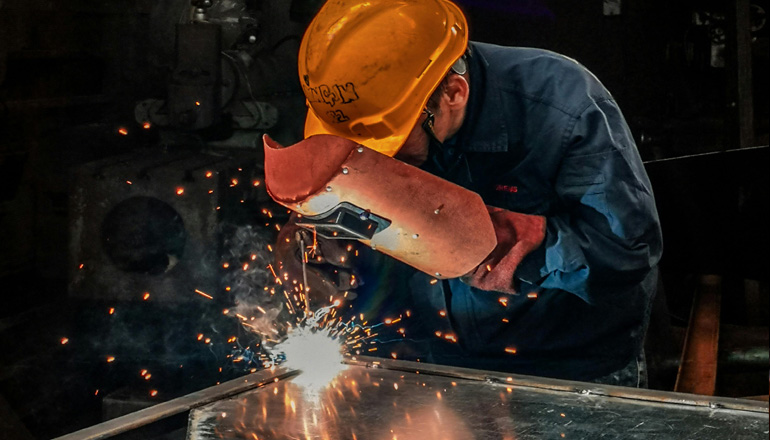
Stainless Steel Welding
The stainless steel welding process varies depending on the thickness and finish of the material, as well as the use of the finished product. While there are a variety of methods for welding stainless steel, there are three that are used most commonly by welders.
These stainless steel welding methods are TIG welding, resistance welding and MIG welding.
Tig Welding Or Gas Tungsten Arc Welding
Tungsten inert gas (TIG) welding, also known as gas tungsten arc welding (GTAW), is a type of welding responsible for securing equipment and machinery.
During the TIG welding process, a non-consumable tungsten electrode is used. The weld puddle and tungsten are cooled and protected with an inert shielding gas (like helium or argon), just like with gas metal arc welding (GMAW), also known as MIG welding.
While MIG welding uses a continuously fed wire that also acts as filler material, the tungsten electrode heats the objects enough so they can form a bond. TIG welding enables the joining of objects without the use of filler, though a filler metal is commonly used in TIG welding. TIG welding can be used for direct metal-to-metal welds and results in neater, spatter-free welds that are generally free of defects.
Offering high quality, versatility and longevity, TIG is the most commonly used stainless steel welding process. This welding process creates a low heat input, which makes it perfect for thin material. The argon gas is often mixed with other gases, depending on the needs of the specific project, including helium, hydrogen and nitrogen. To prevent oxidation and increase corrosion, resistance a single-sided welding process can be used creating inert backing gas protection between the interior and exterior welds.
Resistance Or Spot Welding
Resistance or “spot” welding, as it is often called, is one of the most economical types of welding. The resistance welding (RW) equipment is incredibly versatile, which means it can be used on both small and large projects.
RW uses an electrical current to heat frayed metal edges and seal them together. This type of welding is exceptionally productive on metal with a low melting point because it can be tailored to prevent distortion of the metal.
Mig Welding Or Gas Metal Ac Welding
MIG welding is a semi-automatic process that when done correctly offers a strong joining of two pieces of stainless steel. This process uses an argon-rich shielding gas and a solid wire electrode.
MIG welding is popular because it allows the welder to utilize a pulsed current supply, which can make it easier to weld those tough-to-reach spots on complex stainless steel projects. Other gas mixtures, including those with helium, oxygen and carbon dioxide, are often used to stabilize the arc and improve the quality of the weld.
Choosing the right method for welding stainless steel depends on what qualities you’re looking for. If you're looking for a more affordable weld, spot welding might be the best option for the job. But if the material we’re working with is thin, then TIG or gas tungsten arc welding might be the better choice





















